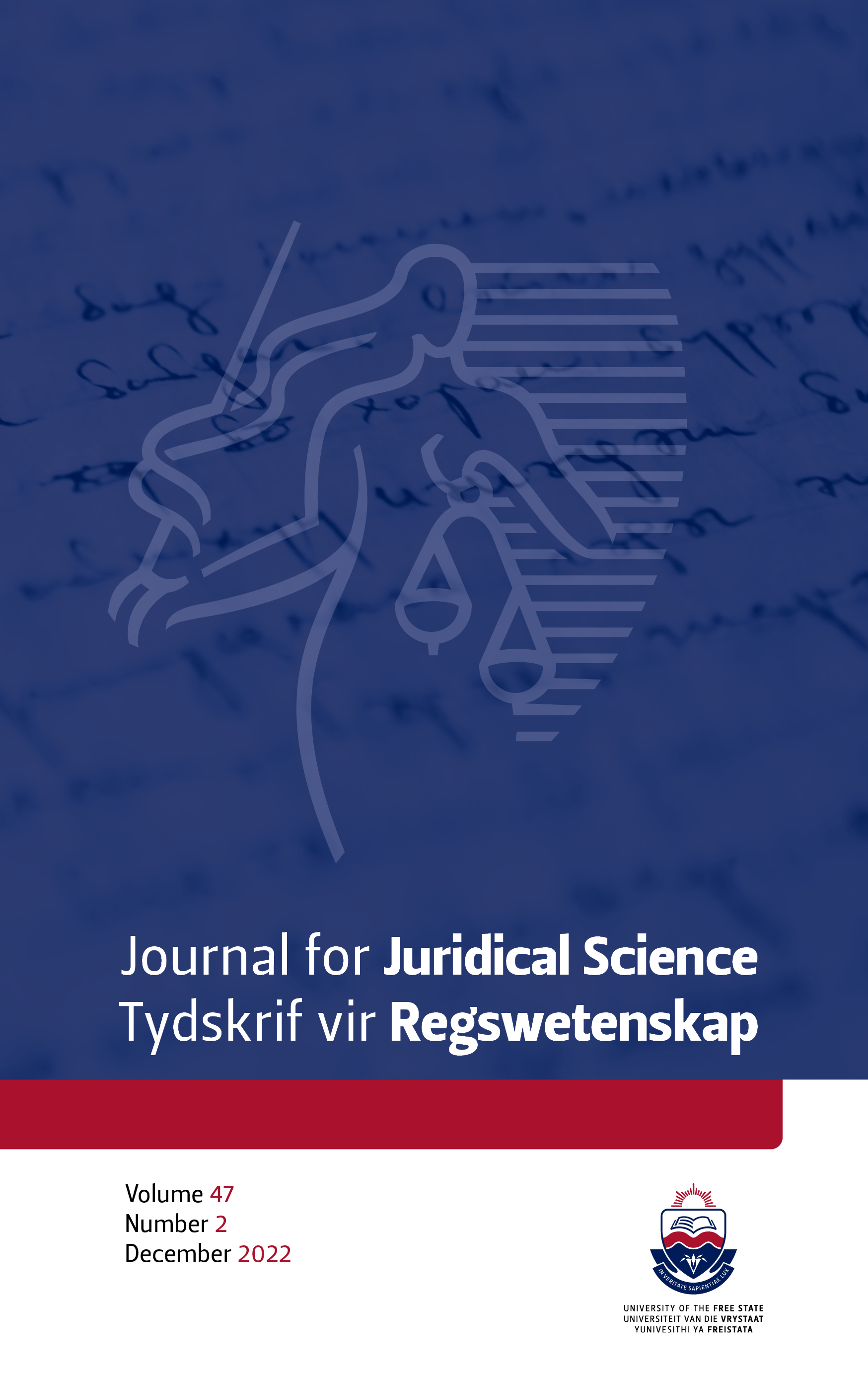The invisible children - protecting the right to birth registration in South Africa
DOI:
https://doi.org/10.18820/24150517/JJS47.i2.3Abstract
Birth registration is fundamentally important for the protection of the rights of children. It is the key that unlocks their fundamental rights. Children without birth certificates can be regarded as “invisible”. Given the importance of birth registration, the United Nations Children’s Fund set a target to achieve universal birth registration (i.e., birth registration for all children) by 2030. This target flows from the adoption of the Sustainable Development Goals (SDGs) by the United Nations General Assembly in 2015. The SDGs includes a dedicated target in goal 16 to provide a legal identity for all, including birth registration, by 2030. South Africa’s birth registration rate has remained stagnant at 88.6 per cent from 2011 to 2016. (This figure will be reviewed when the Census 2022 data becomes available.) Although South Africa’s birth registration rate is higher compared to some other countries in Africa, it still falls short of the UNICEF target of universal birth registration. This article centres around the overarching question as to whether the legislative framework for birth registration in South Africa is optimal for achieving the UNICEF target of universal birth registration by 2030. It starts off with an investigation of the causes of low birthregistration rates and the concomitant classes of children who are vulnerable to low birth-registration rates. Next, the importance of birth registration and the devastating consequences of failure to obtain a birth certificate are considered. This is followed by a review of the relevant provisions of international human rights instruments and the Constitution of the Republic of South Africa, 1996. Next, the legal framework, particularly the Births and Deaths Registration Act 51 of 1992 and its regulations are critically analysed, with a view to identifying inadequacies in legislation, improper implementation of legislation, and failure to remove limitations and barriers to birth registration. Finally, recommendations are made for law and policy reforms to remedy these shortfalls.
Downloads
##submission.downloads##
Published
Issue
Section
License
Copyright (c) 2022 Author(s)

This work is licensed under a Creative Commons Attribution 4.0 International License.




